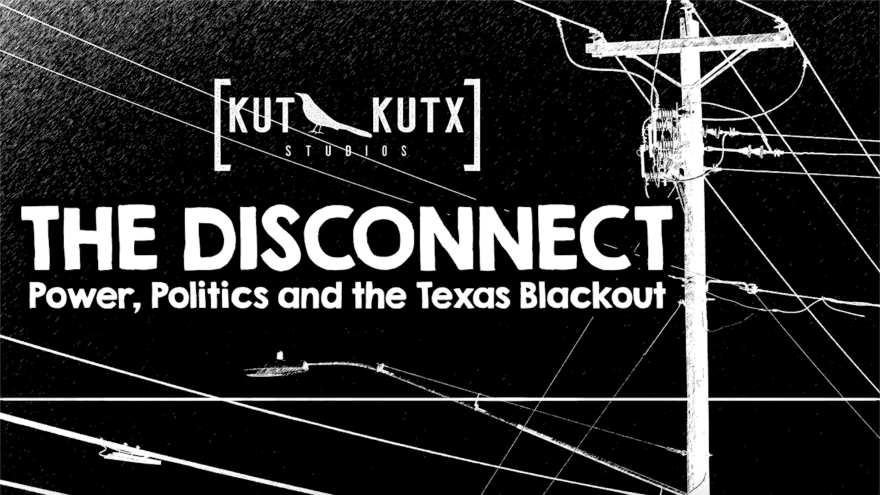You might have seen headlines about electricity prices in Texas going through the roof recently, as extreme heat keeps bearing down on the state. But those headlines really aren't telling the whole story.
In fact, the electricity market in Texas is doing exactly what it's designed to do — and most customers probably won't notice any effect on their bill.
To understand this, we're going to have to get a little wonky, so bear with me.
An incentive to generate power
Wholesale electricity in Texas — the power coming right out of the power plant — is priced to a large degree on scarcity. Demand is way up and there's not much extra? Prices go up as more expensive generators come online to help fill the gap. This is an incentive to bring more generators online to keep everything working smoothly.
So, higher prices during peak electricity demand is normal; prices basically go up every summer and sometimes in the winter.
"A few hours of those really high prices is actually healthy," Doug Lewin, head of the consulting firm Stoic Energy and author of the Texas Energy and Power Newsletter, said. That's because it acts as an incentive for companies to build new power generation and storage.
The Electric Reliability Council of Texas, which oversees the power grid in most of Texas, has set new all-time electricity demand records almost weekly since the end of June.
It's worth noting, however, that despite the hot weather, prices have actually been pretty low this summer, thanks to low natural gas prices, more solar generation coming online and strong wind performance.
"Prices have been a lot lower than you would expect for all these record-setting demand days we're having," said Michael Webber, a mechanical engineering professor at UT Austin.
In fact, prices have been so low, Webber says there's concern there's no financial incentive for companies to build new power plants.
Who's paying these high prices?
OK, so let's talk about who is actually paying those higher wholesale prices.
The fact is, you’re not the one buying the power that’s coming out of the power plant. The retail provider (or maybe a municipal utility or co-op) that sends you a bill every month is the one buying that power — they might even own the power plant! — and then passing it on to you.
These providers buy electricity in a couple ways. First, they can make a contract directly with a power generator for a fixed price. They might do this days or weeks ahead of time. Second, they can buy power the day before, based on how much they think they'll need for their customers. This is called the "day-ahead market." And last, they can buy on an as-needed basis on the "real-time market." This last one is usually a small fraction of the total power bought and sold because most buyers want more predictability.
"Those price spikes aren't directly rippling through to us."Michael Webber, mechanical engineering professor at UT Austin
On Sunday evening, the wholesale price for one megawatt-hour of electricity (enough to power about 200 homes) went to about $2,500 on the day-ahead and real-time markets for about an hour. That's about 100 times the normal price. But it was only for a short time. (This is not the first time this has happened this summer nor will it be the last.) And, like I said, that's not the price that you're paying. That's the price your provider is paying — but only if they didn't already have a fixed-price contract with generators.
So, the high power prices that you see in headlines are what your provider is paying in that moment — maybe. But for almost all of us air conditioning our homes and businesses, that's not what we're paying. We have a contract with our retail provider or our rates are locked in with a city-owned utility (like Austin Energy) or a co-op.
After the 2021 blackout, the state outlawed plans (Griddy being the most famous) that left customers exposed to prices on the real-time market.
"Those price spikes aren't directly rippling through to us," Webber said.
But if your retail provider makes some really bad decisions and ends up wildly underestimating how much power it needs for its customers, it might be forced to buy on the real-time market. It could end up paying a whole lot for that electricity and, if it's really bad, it might end up going out of business. That's what happened to a bunch of companies during the 2021 winter storm when real-time power prices were at $9,000/mwh for days on end.
"If we were seeing day after day after day of really high prices, I would be telling people when you go to [re-up your contract] expect to pay a lot more," Lewin said, "but that's not what we're seeing."
Regardless, your electric bill won't be higher this month because of (briefly) huge wholesale prices. But your bill probably will be higher because you're using so much electricity trying to keep your house cool.















